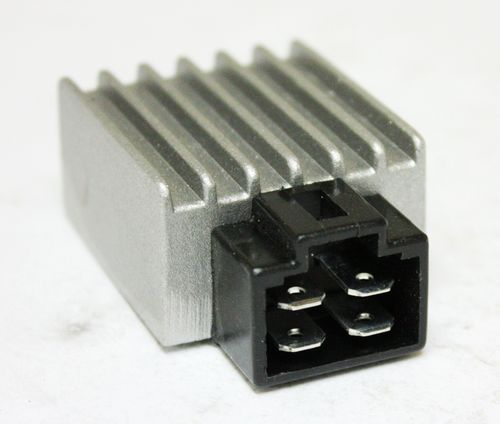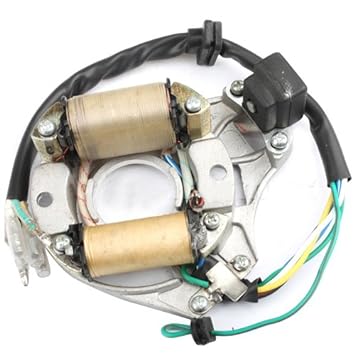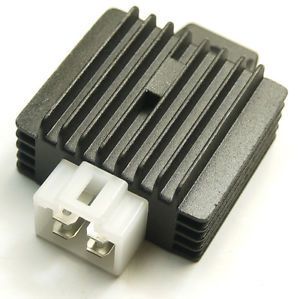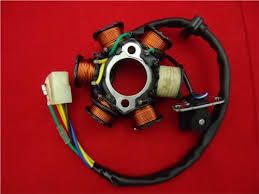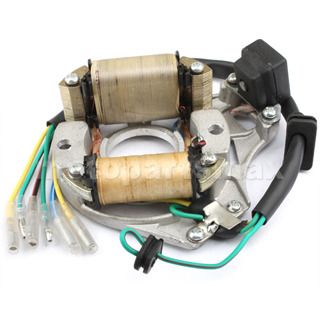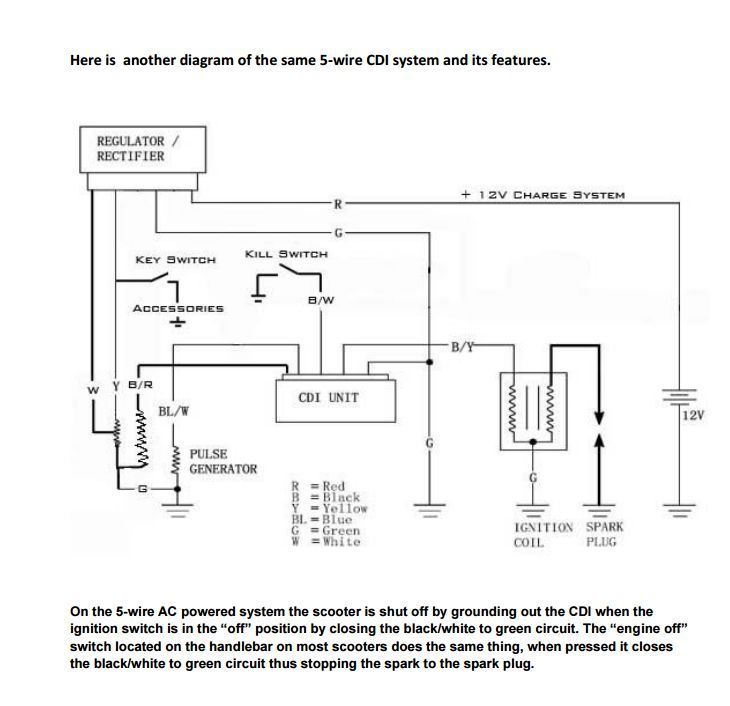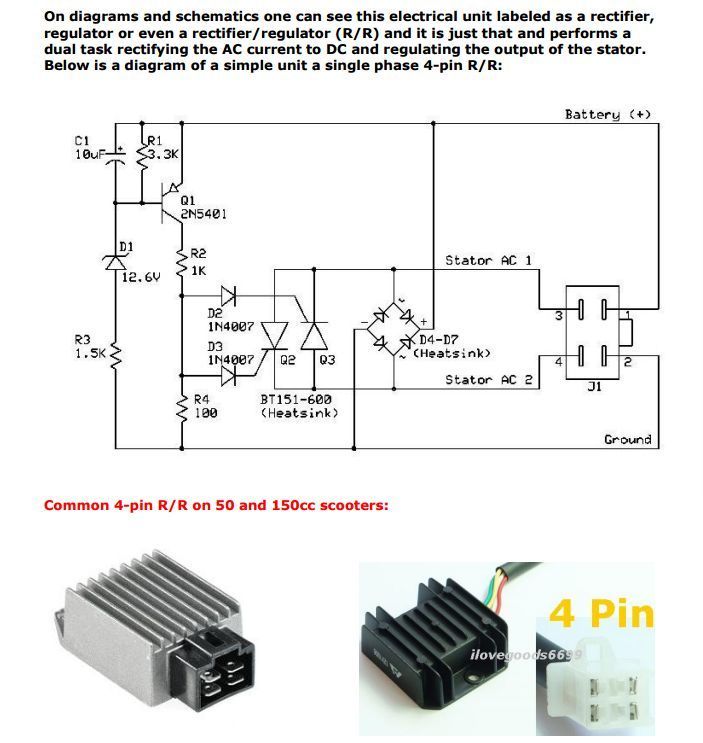That wiring diagram you linked isn't correct for the way the lighting/charge coil's are wound.
The lighting coil is earthed at one end, then the winding's go around the core, just before the winding's stop there is a wire soldered onto the copper winding, then say another 20 or so turn's of copper before the wire to the main harness is soldered on.
So reading thee voltage off the 2x wire's one will read high, eg 16v-20v, and the other will read around 4v-6v.
The lower voltage wire is the trigger wire, it tell's the voltage regulator when to work (exciter wire).
I have seen a couple of different wiring set up's and i have wired my sons' dune buggy the same as your bike.
It hasn't had a problem with flat battery's or light's since we bought it a few year's ago.
But i have swapped the standard bulb's for high power Led's, the lighting is much better and draw's a lot less current.
There are some decent led spot and flood light's available now too
I used one of these 27w Cree led work light's on my old Atomik Fuse pit bike, cost me about $20 including delivery
There's more pic's in my Atomik Fuse build thread (link is in my signature, same with the dune buggy)
They only draw 1 amp, you can get them in a square configuration too
27W LED Spot Circle Work Light Thin Case FOG Lamp OFF Road Truck SUV 4X4WD WUK | eBay
And the 48w cree led light's have come right down in price too now
48W 3200LM 16LED Bright Square Solid Aluminum Work Waterproof Light Beam | eBay
This is what your stator look's like, the lighting/charge coil is the top one in the picture below
The coil on this one use's a yellow wire and a white wire to the reg/rect.
My shed is locked up atm (it's after 1am here), but if you'd like i can test the stator on the buggy in the morning and let you know if there's any reading's from the stator to earth.





